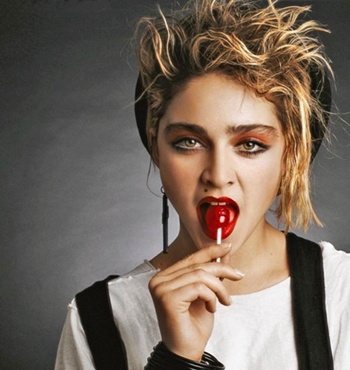Frida Kahlo Biography, Age, Height, Education, Family,
Children, Net Worth, Facts & More
Who is Frida Kahlo?
Magdalena Carmen Frida Kahlo y Calderón was a Mexican painter known for her many portraits, self-portraits, and works inspired by the nature and artifacts of Mexico.
Short Biography
Birth name: Magdalena Carmen
Frida Kahlo y Calderón
Birth date: 6 July 1907
Birth place: Coyoacán, Mexico
City, Mexico
Died: 13 July 1954 (aged 47)
Death place: Coyoacán, Mexico
City, Mexico
Education: Escuela Nacional
Preparatoria (1922–1925)
Colegio
Alemán Alexander von Humboldts (1922)
Other names: Magdalena Carmen
Frieda Kahlo y Calderón, Frieda Kahlo
Height: 1.6 m
Parents: Guillermo Kahlo
(father)
Matilde Calderón y González (mother)
Siblings: Cristina Kahlo, Maria
Luisa Kahlo Cardena,
Margarita Kahlo Cardena, Matilde Kahlo
Calderón
Wilhelm Kahlo Calderón, Adriana Kahlo Calderón
Maria Kahlo Cardena
Spouse(s): Diego Rivera (m.
1929; div. 1939) (m. 1940)
Known for: Painting
Net worth: $80 Million
Frida Kahlo Early Life
Frida Kahlo, whose full name was Magdalena Carmen Frida Kahlo y Calderón, was born on July 6, 1907, in Coyoacán, a suburb of Mexico City, Mexico. She was the third of four daughters born to Wilhelm Kahlo, a German photographer, and Matilde Calderón y González, a Mexican woman of Spanish and Indigenous descent.
Kahlo's early life was marked by both joyful and tragic events. She grew up in a culturally rich environment, surrounded by art, music, and political discussions. Her father's photography studio and her mother's interest in literature and music had a profound impact on her artistic development.
In 1913, at the age of six, Kahlo contracted polio, which left her right leg thinner and shorter than the other. This physical condition would later contribute to her lifelong struggles with pain and health issues. Despite her disability, Kahlo developed a strong will and determination that would define her character and artistic expression.
In 1922, Kahlo enrolled at the National Preparatory School in Mexico City, where she intended to study medicine. It was there that she met Diego Rivera, a prominent Mexican artist and muralist who would later become her mentor, lover, and husband. Rivera's influence on Kahlo's artistic development was significant, as he encouraged her to pursue painting and recognized her talent.
In 1925, Kahlo's life took a dramatic turn when she was involved in a bus accident. The accident left her with multiple fractures in her spine, pelvis, and ribs, as well as other severe injuries. During her long recovery period, Kahlo began to paint, using a mirror attached to her bed to create self-portraits.
Kahlo's early works were primarily influenced by the Mexicanidad movement, which celebrated Mexican culture and traditions. She explored themes of identity, indigenous heritage, and the female experience in her paintings. Her unique style blended elements of realism, symbolism, and surrealism, often incorporating vibrant colors and intricate details.
Frida Kahlo's early life experiences, including her physical disabilities, personal relationships, and cultural background, shaped the foundation of her artistic expression. These formative years laid the groundwork for the profound and introspective artwork that would later make her a renowned artist.
Frida Kahlo Education
Frida Kahlo's education played a significant role in her artistic development and worldview. Here are some details about her education:
National Preparatory School:
In 1922, at the age of 15, Frida Kahlo enrolled at the National Preparatory School in Mexico City. It was a prestigious institution known for its rigorous academic curriculum. Frida intended to study medicine and had aspirations of becoming a doctor. However, her time at the school was cut short due to a life-altering event.
Bus Accident and Convalescence:
In 1925, when Frida was 18 years old, she was involved in a severe bus accident. The accident resulted in multiple fractures in her spine, pelvis, and ribs, among other injuries. She had to undergo numerous surgeries and spent several months bedridden. During her lengthy convalescence, Frida began to explore art as a means of expression and self-discovery.
Artistic Pursuits:
While recovering from the accident, Frida Kahlo started painting and creating art. She used a mirror attached to her bed to paint self-portraits, which became a significant theme in her work. With the encouragement of her family and friends, Frida pursued her artistic talents and developed her unique style.
Artistic Education:
Frida Kahlo did not receive formal art education in the traditional sense. However, her association with the renowned Mexican artist Diego Rivera, whom she met at the National Preparatory School, played a vital role in her artistic development. Rivera recognized her talent and provided guidance and mentorship, sharing his knowledge and techniques with her. He introduced her to influential artists and helped her in establishing connections within the art community.
Exploration of Mexican Culture:
Frida Kahlo's education extended beyond academic institutions. She had a deep curiosity and appreciation for Mexican culture, history, and indigenous traditions. She immersed herself in Mexican folklore, literature, and art, drawing inspiration from pre-Columbian artifacts, popular Mexican imagery, and indigenous symbolism. This exploration of her cultural heritage influenced the themes and motifs present in her artwork.
Frida Kahlo's education was unconventional, as her artistic journey was shaped by personal experiences, mentorship, and a deep connection to her cultural roots. Her unique perspective and self-taught approach to art contributed to her distinctive style, making her one of the most celebrated artists of the 20th century.
Frida Kahlo Family
Frida Kahlo's family played a significant role in shaping her life and art. Here are some details about her family members:
Parents:
Father: Wilhelm Kahlo was a German immigrant and a professional photographer. He came to Mexico in the late 19th century. He had a significant influence on Frida's early exposure to art and photography.
Mother: Matilde Calderón y González was of Mexican and Spanish descent. She was a devout Catholic and played a vital role in Frida's upbringing. Matilde had a close relationship with Frida, and her traditional Mexican clothing often appeared in Frida's self-portraits.
Siblings:
Cristina Kahlo: Frida's oldest sister, born in 1903. She worked as a secretary and was a source of support for Frida throughout her life.
Matilde Kahlo: Frida's younger sister, born in 1909. She was also a source of emotional support for Frida and helped her during her long periods of illness.
Diego Rivera (1886-1957):
Diego Rivera was a prominent Mexican painter and muralist. He and Frida Kahlo had a complex relationship that began when they first met at the National Preparatory School in Mexico City. They married in 1929 and divorced in 1940, only to remarry the following year. Their relationship was characterized by passionate love, infidelity, and artistic collaboration. Rivera had a significant influence on Frida's artistic development, and his muralist style can be seen in some of her works.
Children:
Frida Kahlo and Diego Rivera did not have children together. Frida experienced several miscarriages and health issues that prevented her from having a successful pregnancy.
Other family members:
Frida had a close relationship with her maternal grandmother, Antonia Calderón. She often credited her grandmother with instilling in her a love for Mexican culture and traditions.
Frida Kahlo's family, their support, and the dynamics of her relationships greatly influenced her life and art. The themes of family, identity, and cultural heritage can be seen in many of her paintings, where she depicted herself, her loved ones, and elements of Mexican culture.
What is Frida Kahlo known for?
Frida Kahlo, a Mexican artist, is best known for her distinctive and highly personal paintings that reflect her experiences, emotions, and physical pain. Here are some key aspects for which Frida Kahlo is renowned:
Self-Portraits: Kahlo's self-portraits are iconic and form a significant part of her body of work. Through these intimate portrayals, she explored her identity, physical and emotional suffering, and feminist themes.
Surrealism: While Kahlo is often associated with the Surrealist movement, she considered herself more of a realist. Her paintings, however, often incorporated symbolic and dreamlike elements that blended reality and fantasy.
Depiction of Pain and Resilience: Kahlo's artwork often depicted her physical and emotional pain, resulting from a series of health issues and personal struggles. Her resilience and determination to overcome adversity are prominent themes in her paintings.
Mexican Culture and Identity: Kahlo embraced her Mexican heritage and drew inspiration from indigenous Mexican culture, incorporating traditional elements, symbolism, and vivid colors into her artworks.
Feminist Icon: Frida Kahlo's art and life have made her an important figure in feminist art history. Her exploration of gender, sexuality, and female empowerment through her artwork continues to inspire and resonate with many.
Influence on Contemporary Art: Kahlo's impact on contemporary art is significant, with her art continuing to inspire generations of artists around the world. Her bold, introspective style and exploration of personal identity have left a lasting legacy.
Frida Kahlo's unique artistic expression and her ability to convey her experiences and emotions through her paintings have made her an enduring figure in the art world. Her contributions have earned her a prominent place in art history and popular culture.
Frida Kahlo Facts
Here are some interesting facts about Frida Kahlo:
Birth and Nationality: Frida Kahlo was born on July 6, 1907, in Coyoacán, Mexico City, Mexico. She was Mexican by nationality.
Polio and Bus Accident: At the age of six, Frida contracted polio, which caused her right leg to be thinner and shorter than the other. Then, in 1925, she was involved in a bus accident that left her with severe injuries, including a broken spine and pelvis. She underwent numerous surgeries and had a long period of recovery.
Self-Portraits: Frida Kahlo is renowned for her numerous self-portraits. Throughout her artistic career, she created around 55 self-portraits, which allowed her to explore her identity, pain, and emotions. Her self-portraits often depicted her distinctive style, cultural heritage, and physical and emotional struggles.
Surrealist Influence: Although Frida Kahlo's work is often associated with surrealism, she considered herself a realist. While her art contained elements of surrealism, her paintings were deeply personal and autobiographical, drawing from her own experiences and emotions.
Relationship with Diego Rivera: Frida Kahlo had a tumultuous relationship with Diego Rivera, a famous Mexican muralist. They first met when Frida was a student at the National Preparatory School, and they married in 1929. Their relationship was marked by infidelity, separations, and reconciliations. They divorced in 1940 but remarried the following year and remained married until Frida's death.
Medical Issues and Disability: Frida Kahlo's life was marred by numerous health issues and physical disabilities. In addition to the effects of polio and the bus accident, she also suffered from chronic pain, underwent multiple surgeries, and experienced miscarriages. These experiences influenced her artwork and the themes of suffering and resilience that are often present in her paintings.
The Blue House: Frida Kahlo's childhood home, known as the Blue House or Casa Azul, is located in Coyoacán, Mexico City. It is now a museum dedicated to her life and art, showcasing her paintings, personal belongings, and artifacts.
International Recognition: While Frida Kahlo achieved some recognition during her lifetime, her fame grew significantly after her death. Her work gained widespread international acclaim in the latter half of the 20th century. Today, she is regarded as one of the most influential and celebrated artists in the world.
Legacy and Cultural Icon: Frida Kahlo's art continues to resonate with audiences worldwide. Her powerful and introspective work, addressing themes of identity, gender, pain, and Mexican culture, has made her an enduring cultural icon. She has inspired numerous artists, writers, and filmmakers, and her image has become an iconic symbol of strength and individuality.
These facts provide a glimpse into the remarkable life and artistic contributions of Frida Kahlo, whose work continues to captivate and inspire people around the globe.
Frida Kahlo Quotes
Here are some notable quotes by Frida Kahlo:
1. "I paint self-portraits
because I am so often alone, because I am the person I know best."
"Feet, what do I need you
for when I have wings to fly?"
2. "I never paint dreams or
nightmares. I paint my own reality."
3. "I am my own muse. I am
the subject I know best. The subject I want to know better."
4. "I paint flowers so they
will not die."
5. "I hope the exit is joyful,
and I hope never to return."
6. "I am not sick. I am
broken. But I am happy to be alive as long as I can paint."
7. "Nothing is absolute.
Everything changes, everything moves, everything revolves, everything flies and
goes away."
8. "I tried to drown my
sorrows, but the bastards learned how to swim, and now I am overwhelmed by this
decent and good feeling."
9. "They thought I was a
surrealist, but I wasn't. I never painted dreams. I painted my own
reality."
These quotes offer insight into
Frida Kahlo's introspective and thought-provoking perspective on life, art, and
her own experiences.
Related Searches
frida kahlo biografia
frida kahlo accident
frida kahlo movie
frida kahlo self-portrait
why is frida kahlo famous
frida kahlo for kids
frida kahlo childhood
frida kahlo art style
diego rivera net worth
frida kahlo death cause
frida kahlo childhood
frida kahlo movie
frida kahlo husband
frida kahlo paintings













0 Comments